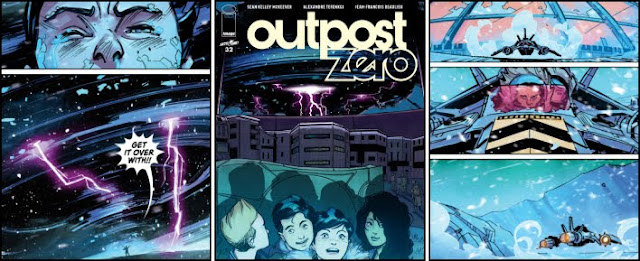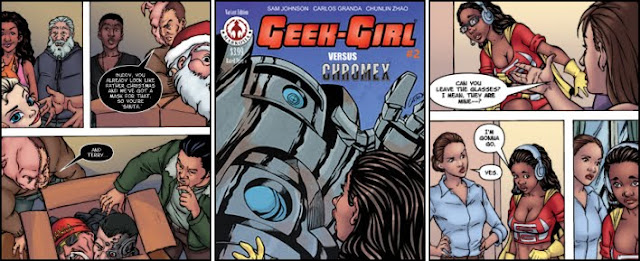 |
| THE AMAZING SPIDER-MAN No. 793, February 2018 |
Before this cliffhanger conclusion though, the Eisner Award-winner’s story-line is arguably a befuddling mess, with the titular character seemingly foiling a truck robbery only to then steal the vehicle’s cargo of caviar, foie gras, and “some of the most expensive wines on the East Coast” for himself. True, this publication’s aforementioned short-lived introduction does mention the fact that Web-head had been “outgunned and captured” by Maniac 'off-screen', yet the first indication that Peter Parker’s alter-ego has actually become one of the criminal’s “burgeoning symbiotic army” isn’t debatably clear until the wall-crawler’s facial disfigurement is fully disclosed by artist Ryan Stegman later in the scene, and furthermore this particular comic never properly explains just how the costumed vigilant became an “unfriendly neighbourhood spider-slave”, nor how Price’s villainous super-power actually works..?
Equally as disconcerting is Mania’s introduction, which initially seems to have been perfectly timed in order for Agent Venom’s partner to inadvertently watch her “coach” shockingly burn to death inside a melting furnace. The purple-haired student apparently still has “some powers of my own” despite losing her symbiote, however somewhat frustratingly none of Benton’s loss or the girl’s past relationship with Flash Thompson is explored within this instalment of “Venom Inc.” except via an off-hand remark that Andi still has “my mystic Hell-mark” and conveniently “could kinda sense” she had to leave Philadelphia to visit the Bronx-located scrapyard.
Of course debatably this book’s biggest foible is its belief that by threatening the staff of the Daily Bugle, the “mind-controlled” Spider-Man would somehow attract the Black Cat’s attention “and draw her into the open.” This puzzling scene, which the “out of character” inkling himself laters admits probably “wasn’t the best plan”, is genuinely head-scratching, and seems to be a complete waste of time unless cynically seen as a lazy way for Slott to show New York City’s media that the human mutate was acting criminally whilst ‘under duress’...
 |
| Writer: Dan Slott, Artist: Ryan Stegman, and Color Artist: Brian Reber |
































